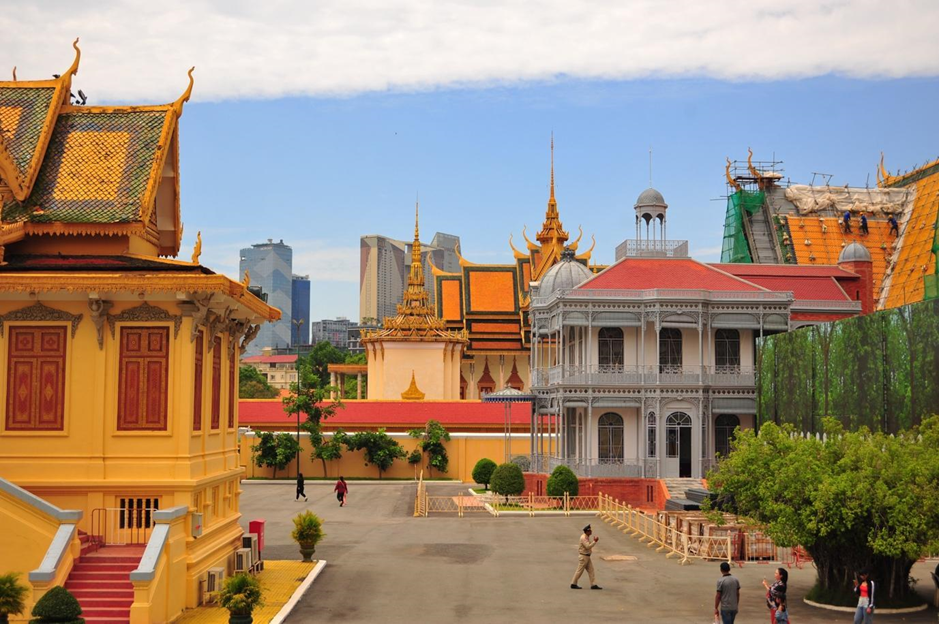Thoughts on the international media coverage of the Cambodian-Thai conflict
- Christophe Gargiulo

- Jul 31
- 3 min read
As the border between Thailand and Cambodia has been in the global spotlight in recent days, one thing is clear to anyone following the international media coverage: the dominant narrative focuses on armed clashes, territorial rivalries and the plight of refugees, while ignoring the remarkable solidarity on the ground and the voices of those working for peace. Why are they being ignored? What logic does it serve?

Violence makes the headlines, solidarity remains in the shadows
In the current conflict, most Western media outlets are focusing their attention on artillery exchanges, grim death tolls and geostrategic issues. Words such as ‘provocation’, “crisis” and ‘invasion’ are omnipresent. These dramatic stories, which stir emotions and attract audiences, often overshadow the work of NGOs, the commitment of volunteers and the quiet courage of the communities affected.
‘Yet the ground is seething with collective initiatives: evacuating people, caring for the wounded, setting up makeshift shelters in Buddhist temples, distributing food through networks of monks, volunteers and Cambodian and foreign NGOs.’
The Cambodian diaspora, spread across five continents, is also providing massive logistical and financial support. This capacity for mutual aid and patriotism tinged with humanism is rarely reported outside the local or specialised press.
Who is interviewing the peacemakers?
The major news agencies cover every military incident in detail but publish few interviews with figures committed to de-escalation or reconciliation. We search in vain for the voices of pacifist monks, activists or refugees themselves talking about their hopes and calls for peace. Only a few dissenting voices, such as certain bishops, launch passionate appeals for an end to the violence, to the indifference of the media, while counter-current columnists remind us that ‘the Cambodian people are driven by genuine patriotism – not to be confused with nationalism, which breeds hatred’. This essential nuance is rarely reported.
Why this narrative bias?
The international news feed prioritises events, confrontation and visual drama.
"Editorial and commercial logic favour crisis and shock, while solidarity, which is less spectacular, is difficult to “sell” to global audiences saturated with images of war. If displaced people are mentioned, it is to show their misery and the humanitarian emergency, rarely to show how a society, even a wounded one, is reacting collectively with strength and dignity. "
Time constraints, access to the field and, sometimes, government mistrust of foreign correspondents limit the diversity of journalistic coverage. Furthermore, the militarisation of discourse on social media – where polarisation and emotion often prevail over nuance – further relegates expressions of solidarity to the background.
An invisible but active civil society
However, on the ground, footage from local reporters and NGOs shows another side: that of popular mobilisation, solidarity networks, social resilience and open patriotism, where national defence goes hand in hand with support for the most vulnerable.
The Cambodian society is united in marches, fundraisers, welcoming refugees and peaceful demonstrations, while the diaspora amplifies the movement. In this turmoil, NGOs, monks, students and migrant workers are inventing a thousand forms of peaceful resistance every day, far from the media spotlight.
Peace is not a ‘non-story’
The story of peace, dialogue and solidarity deserves to be told. Giving visibility to those who work quietly behind the scenes would not only help to combat oblivion, but also serve as a reminder that behind every crisis there is always the possibility of renewed brotherhood.







We should get the caprese salad. I'm really in the mood for Burrata cheese.
<a href="Burrata cheese">Burrata cheese</a>
https://forums.ipoh.com.my/thread-20224.html
https://www.auseka.com.au/home-services/bothbest
https://www.uscgq.com/forum/posts.php?forum=general&id=526199
https://www.uniprep.it/forums/topic/precision-milled-bamboo-flooring-why-quality-matters/
https://haze-growroom.de.tl/Forum/topic-24172-1-Bamboo-Flooring-The-Eco-Friendly-Choice-for-a-S.htm
https://worthitorwoke.com/forum/topic/why-bamboo-flooring-is-the-smart-sustainable-choice-for-eco-conscious-homes/
https://drsridharias.com/forums/discussion/history/bamboo-flooring-a-touch-of-chinas-natural-beauty-underfoot
https://blog.rackons.in/how-bamboo-flooring-contributes-to-leed-points-in-sustainable-building-projects
https://parcheweb.com/forum/general/charlemos-de-nosotras/81939-bamboo-flooring-certifications-fsc-ce-carb
https://www.auseka.com.au/blog/eco-conscious-living-starts-underfoot-why-bamboo-is-the-future-of-flooring
https://my.hiepsiit.com/blogs/70036/Low-VOC-Bamboo-Flooring-Essential-for-Earning-Green-Building-Certifications
https://www.pr4-articles.com/Articles-of-2024/step-step-diy-guide-installing-click-lock-bamboo-flooring-confidence
https://drukarnia.com.ua/articles/low-voc-bamboo-flooring-essential-for-earning-green-building-certifications-Kra3P
https://www.pr5-articles.com/Articles-of-2024/keep-your-bamboo-floors-beautiful-practical-maintenance-tips-lasting-performance